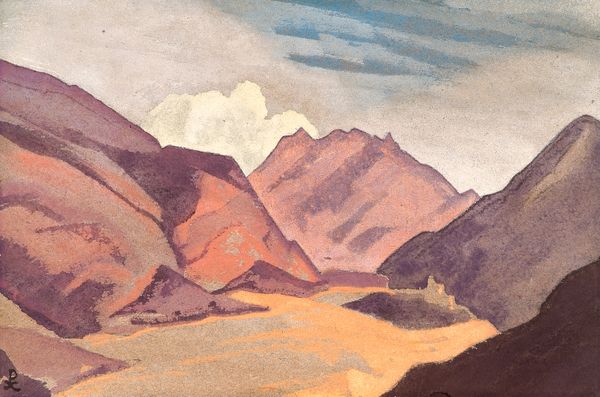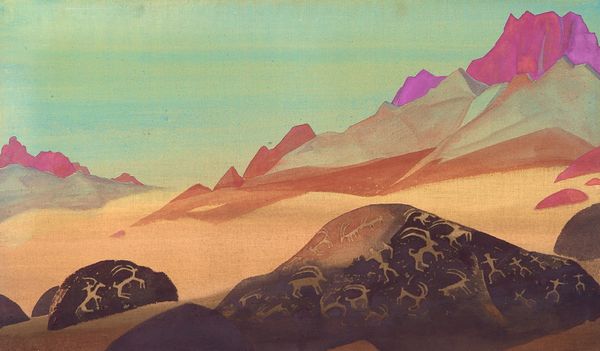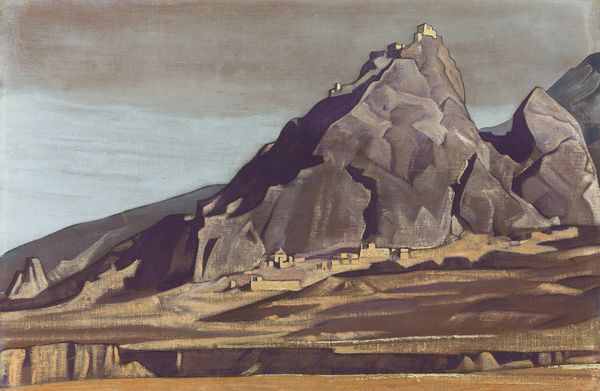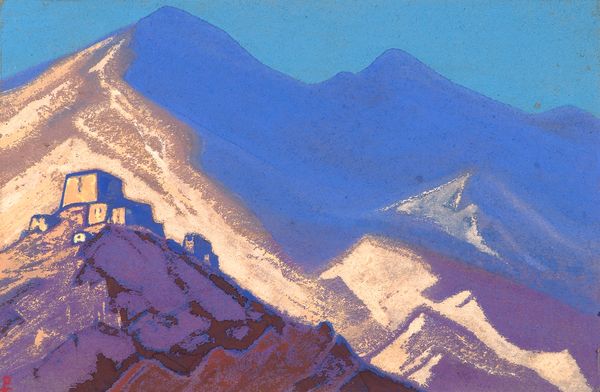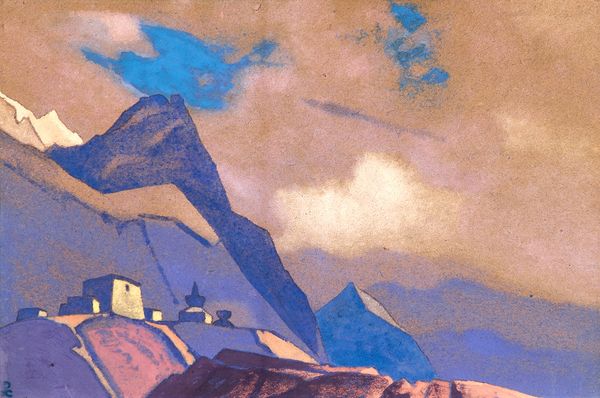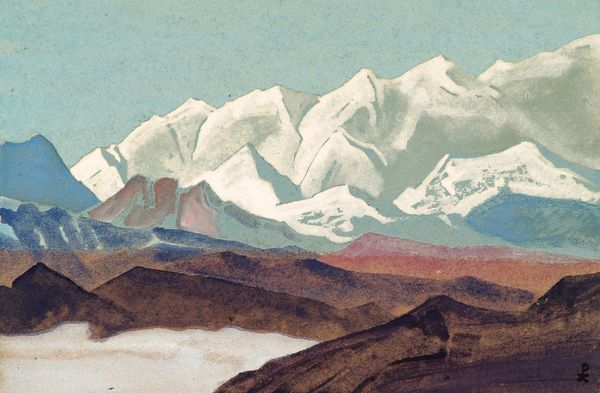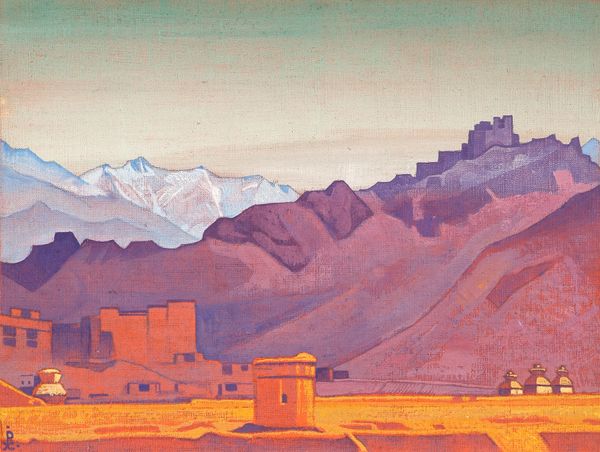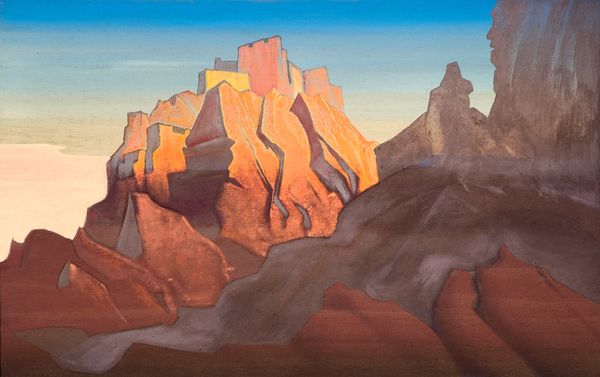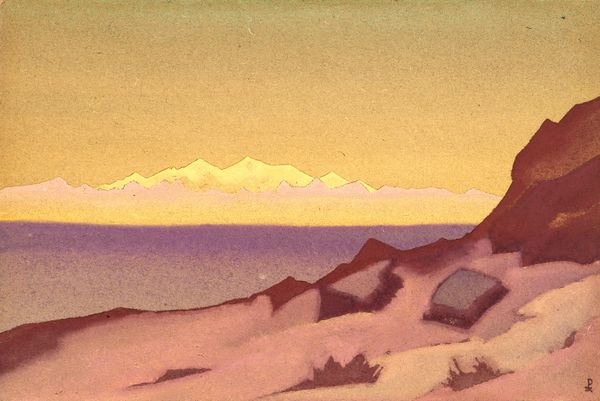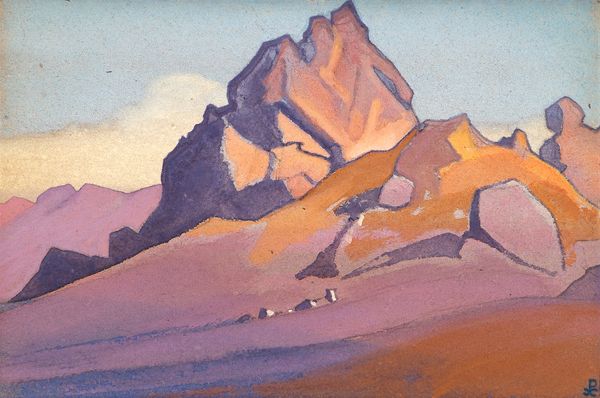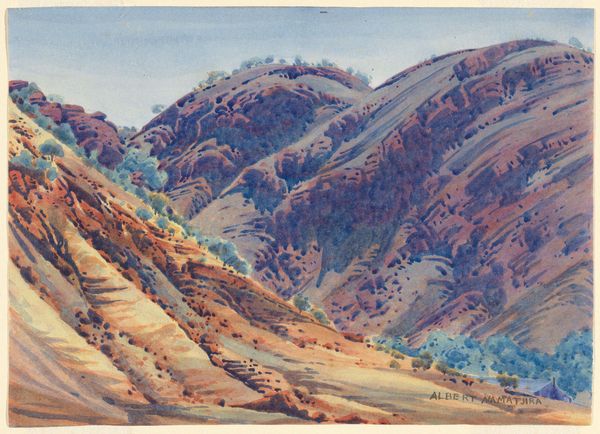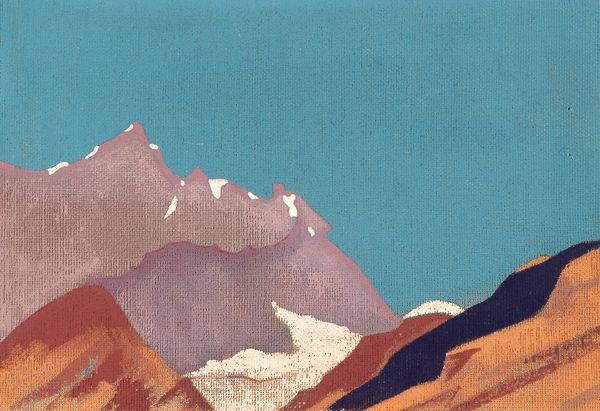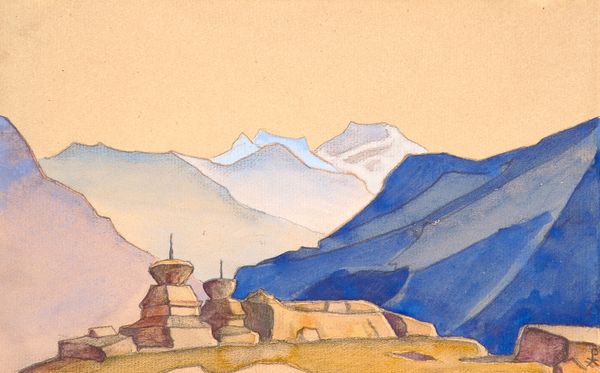
Copyright: Public domain
Curator: Let's turn our attention to "Ladakh. Leh.," a mixed-media tempera painting created in 1925 by Nicholas Roerich. What's your immediate take on it? Editor: The colors! That range of dusky rose, burnt sienna... it feels like looking at a landscape baked in another dimension, almost Mars-like, with that pale sky like a faded dream. I wonder, what pigment choices informed that aesthetic? Curator: Roerich, known for his Theosophical leanings, often infused his landscapes with symbolic meaning. The Himalayas held a sacred place for him. Perhaps the pigments were selected not just for their visual qualities, but for their associations with earth, fire, and the spiritual quest. Editor: Yes! And consider the material labor involved: gathering minerals to create these specific pigments, grinding them, combining them to make the tempera... each step contributes to this otherworldly final image. What kind of primer did he employ, I wonder, to get that canvas so receptive to the colour? Curator: He’s really simplified the forms, hasn’t he? Look at those mountains—almost geometric, like architectural models. The buildings nestled in the valley feel almost monolithic, permanent. Editor: And that simplification emphasizes the mass production aspect, paradoxically! Roerich is elevating not just the spiritual significance but, I suspect, is trying to underscore an ideal vision for human labor through art production. Was he advocating for wider adoption of his material and techniques, even amongst lay painters? Curator: Possibly! It’s also interesting how he flattens the space. The background feels almost as present as the foreground. There's this sense of timelessness. Ladakh as it was, Ladakh as it will always be. Editor: Which raises questions about the reception and circulation of the piece. These depictions reinforce and romanticize perceptions, often influencing investment or interest in a specific region based on cultural exports of the sort. Did the consumption of such artworks play a role in geopolitical and material circumstances around Ladakh? Curator: It’s a powerful notion. So, what are your final thoughts? Editor: This painting prompts us to think about the global supply chains of even ‘spiritual’ artworks, and the consumption habits that underwrite artistic production! Curator: Indeed! For me, it still speaks of the power of place and the artist's role in transmuting earthly landscapes into spiritual symbols.
Comments
No comments
Be the first to comment and join the conversation on the ultimate creative platform.
